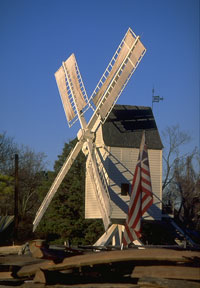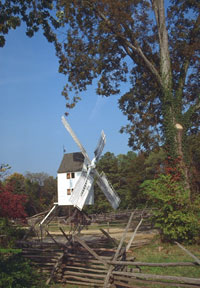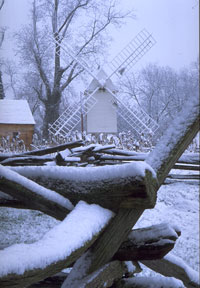Page content
Miller (Robertson's Windmill)
Robertson's Windmill is not currently open to the public.
Giant structure with simple purpose
A colonial windmill was a large and complicated machine built for the simple purpose of grinding small grains.
William Robertson's windmill closely resembled the one located in Colonial Williamsburg's Historic Area today – a narrow, two-story house balanced on an oak post and fitted with four 26-foot frames rigged with linen sails. When the wind rose – a 20- to 30-mile-per-hour breeze was best – the miller pivoted the house to harness the power of the wind.
System of gears drove mill to grind grain
The sails spun a shaft mated to a geared wheel of 51 teeth called a "rack." The rack drove a perpendicular wooden cage gear called a pinion. The pinion turned a shaft that spun a running millstone against a fixed bed stone below. Wheat and corn fed through a hopper between the stones emerged as flour and meal.
Keeping everything running smoothly – the running stone had to turn from 105 to 110 times a minute – was tricky and dangerous. For his skill and trouble, the miller received one sixth of the grain he ground.
Learn more:



